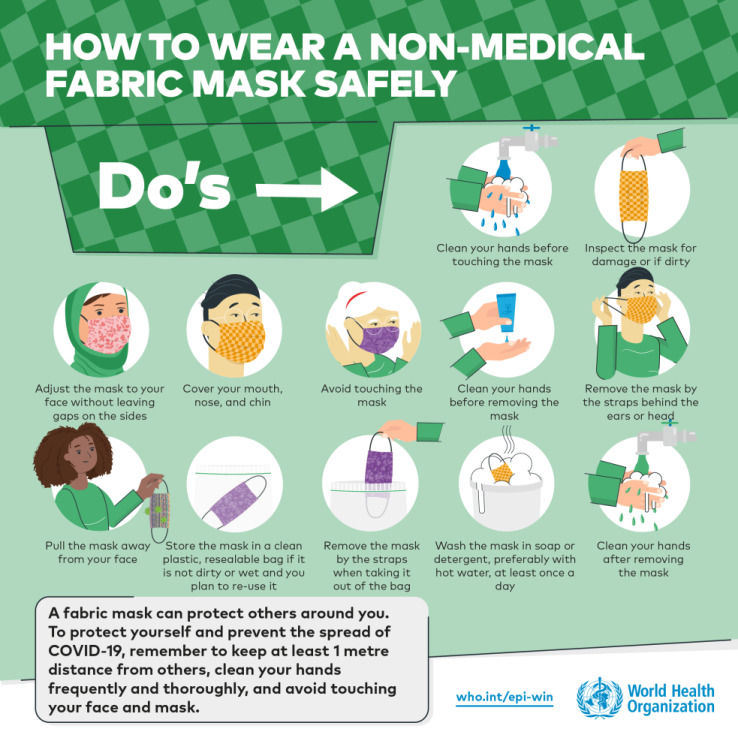Fabric Masks Trend, Safe or Not
- Samaa Ismail
- May 7, 2021
- 3 min read
The debate on the efficiency of face masks since the beginning of the pandemic and the issues of its availability has made people resort to easier solutions; they made their own masks at home. And throughout the last year, we started seeing fashion designers incorporating masks into their lines, we saw celebrities wearing masks that match their dresses on red carpets. We even started finding these designer masks sold in clothing stores for everyone to wear. But the debate still remains, are these masks safe, could they actually prevent an infection, are there any further safety measures to ensure that they get the job done?
Fashion designers began designing their own versions of face masks that serve to the latest trends. People now seek to abide by the precautions but in style. It was a smart move from designers as Fabric masks have very high demand to the point that nowadays, there are many online stores and social media pages specialized in designing and selling these facemasks. With more and more fashion brands adding face masks to their clothing range however, one might wonder how effective they really are.
Which safe materials did fashion designers prefer to use in designing this item?

According to assistant fashion designer at Kojak Studio, Shahira El Rashidy, “We use any breathable washable fabric that will be suitable for making a face mask, for example: satin, cotton or crepe. It depends on the fabric, but generally not less than 3 layers to be safe.”
“It can be the same fabric of the dress. Some customers ask if they can have a matching face mask; if the fabric of the dress is for example tulle then the face mask can be made out of a 3 layer lining and the external layer can have the same fabric of the dress. Fashion designers now include facemask as it became one of the most important items with any dress or new collection”, El-Rashidy added El-Rashidy mentioned leather face mask.

They are very trendy but not that safe, also hard to be washed and used on a daily basis. She hadn’t tried adding medical layers, but it will definitely be safer than any other fabric.
According to Virologist Nahla Abd Elwahab, “fabric masks protect you from Corona and viruses by 55%, and if you wear over the fabric mask a surgical mask that will protect you by 88.5%.”

Abdelwahab added that when you wear cloth masks you should maintain at least a 1-metre distance between yourself and others to reduce your risk of infection. And every day wash your fabric mask. Do not use it for more than a month.
What does the World Health Organisation (WHO) think about Fabric masks?
The World Health Organisation advised wearing fabric masks to prevent Corona virus and presented steps to show how to wear and use fabric masks.

Wash your hands with soap and water or alcohol disinfectant before touching fabric mask
Check your mask well to see if it is damaged or dirty.
Adjust the position of the mask on your face to make sure that there are no spaces left on either side of the face.
Make sure the mouth, nose, and chin are covered. Do not put a mask below the nose.
Avoid touching the mask.
Clean your hands before removing the Mask.
Remove the mask by the straps behind the ears or the head.
Pull the mask away.
Keep the mask in a clean, resealable plastic bag.
Wash fabric masks with soap or detergent, and it is preferable to wash it with hot water at least once a day.
Clean your hands after getting rid of the mask.

It is worth mentioning, one of the most common materials for homemade masks is cotton. In 2006, a group of University of Pittsburgh researchers shared their method of making face masks with a Hanes Heavyweight 100 percent pre-shrunk cotton T-shirt. It involved cutting the shirt into one outer layer and eight inner layers, then tying the pieces together and around the wearer’s head. The homemade variety also provides another benefit: they won’t run out: “Homemade masks however would not suffer from limited supplies,” it continued, “and would not need additional resources to provide at large scale.”
If you want to design your own fabric mask at home you can watch this video:







Comments